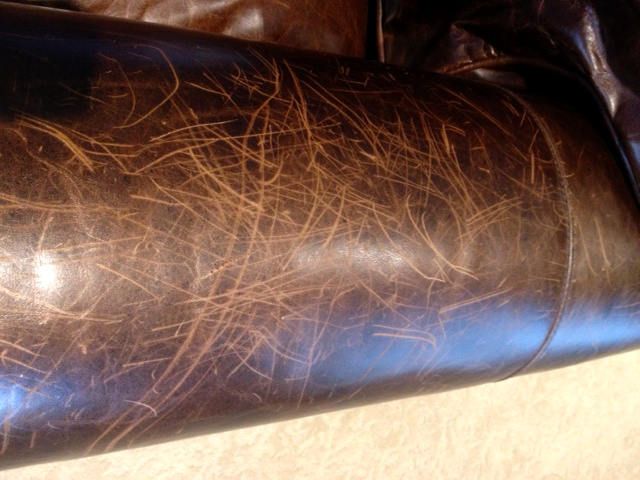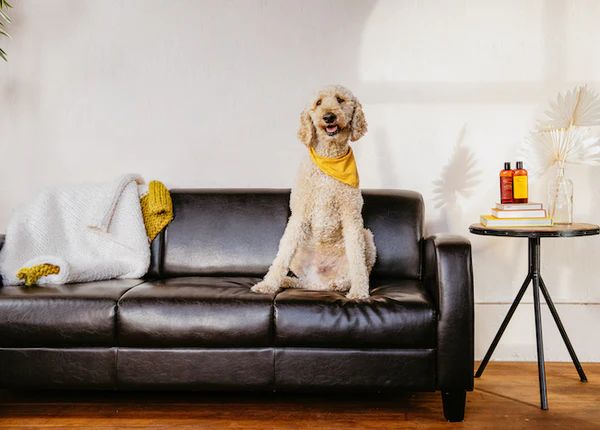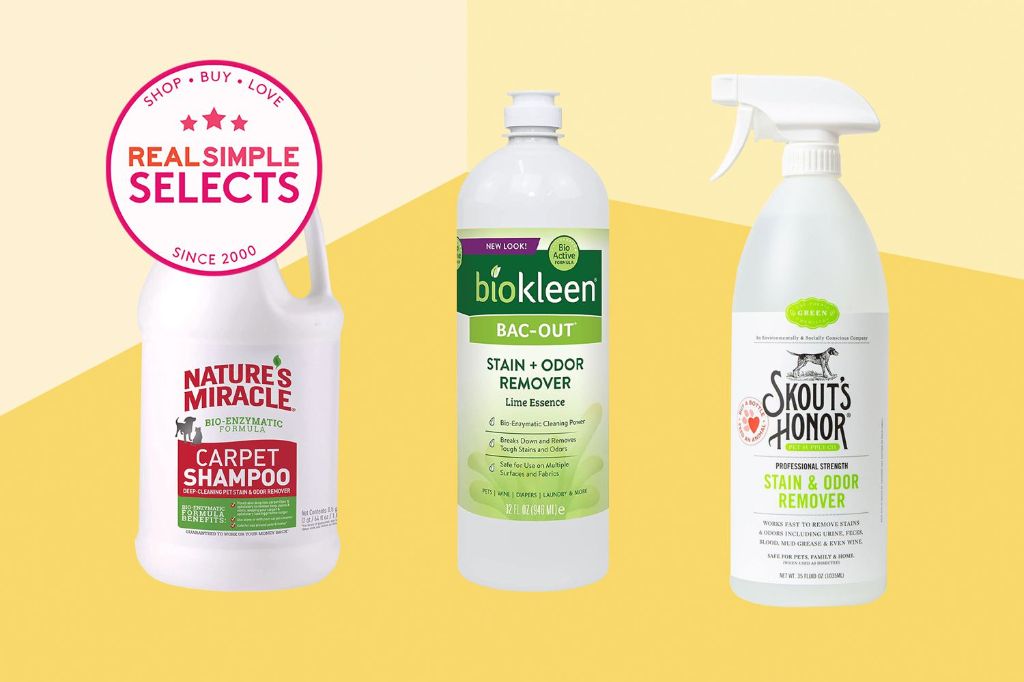Introducing the Topic
Having leather furniture can seem like a risky choice for pet owners. The luxurious, supple material offers an elegant look and feel in your home. But it also carries the risk of scratches, punctures, and stains from your furry companions. Many owners wonder if owning both leather furniture and pets is even possible. With some preparation and training, the two can absolutely co-exist in harmony. This guide will explore the pros and cons, provide tips for protection, discuss pet-friendly leather options, offer training advice, and more. That way pet parents can make an informed decision about whether leather is right for their home and family.
Pros of Leather Furniture for Pet Owners

Leather furniture has several advantages that make it a good choice for pet owners. According to Furniture Academy, “Leather furniture is durable, easy-to-clean, and the overall best type of furniture for pets” (https://furnitureacademy.com/best-furniture-pets-leather-fabric/).
One of the biggest pros of leather is that it looks luxurious and stylish. Leather furniture can lend an upscale, classic look to a room. The rich texture and elegant appearance of leather make it attractive for design-conscious pet owners.
Leather is also easy to clean and maintain. According to American Classics Leather, leather’s cleanability is a major advantage when living with pets (https://americanclassicsleather.com/blogs/leather-101/5-reasons-why-leather-furniture-is-best-for-kids). Pet hair and dander can be easily whisked away. Leather also stands up well to occasional scratches or stains. With proper care, leather’s appearance can be retained for years.
Additionally, leather is a very durable material that can withstand wear and tear from pets. As FCILondon notes, “Leather is a strong and durable material that can withstand wear and tear” (https://www.fcilondon.co.uk/blog/will-dogs-ruin-a-leather-couch/). Leather resists tearing, punctures, and scratches better than fabric and other materials. This makes it a sensible choice for pet owners.
Cons of Leather Furniture for Pets
While leather furniture has many benefits for pet owners, there are some potential downsides to consider as well:
Leather can be susceptible to scratches from pets’ nails, especially if the leather is thinner or lower quality. Even high-quality leather can become scratched over time with repeated use by pets with sharp nails. Scratches damage the leather’s appearance and make it more difficult to repair (https://furnitureacademy.com/best-furniture-pets-leather-fabric/).
Leather furniture can potentially be damaged by pet accidents. Urine and feces stains may be difficult to remove entirely from leather. Moisture can cause the leather to stiffen or crack if not cleaned promptly. Pet accidents should be cleaned up immediately to minimize damage (https://www.article.com/blog/leather-couch-with-dogs/).
Even high quality leather requires periodic conditioning to keep it supple and prevent drying out. Pet owners need to be diligent about applying leather conditioner regularly if their pets will be using leather furniture frequently.
Protecting Leather Furniture

There are several steps pet owners can take to protect their leather furniture and prevent damage from scratching, tearing, and accidents. An easy first step is to use furniture covers or blankets when pets will be on the couch or chair. Soft blankets or quilts can protect the leather surface from nails, prevent staining, and are easy to remove and wash if they get dirty. Companies like Sure Fit sell furniture covers specifically designed for pets.
Keeping your pet’s nails trimmed is also important to avoid scratches, according to experts like Leather Honey (https://www.leatherhoney.com/blogs/leather-care/how-to-protect-your-leather-couch-from-scratches). Using scratching posts, corrugated cardboard, or sisal mats can divert scratching away from your leather furniture. Place attractive scratching surfaces near leather furniture to provide an appealing alternative.
Cleaning leather frequently and properly can also protect its surface. Use a leather-specific cleaner to gently wipe the leather and lift dirt and oils that could otherwise stain the material. Never use harsh household cleaners. Condition it regularly with a leather conditioner to keep the material supple and prevent cracking.
Pet-Friendly Leather Options
When choosing a leather couch if you have pets, there are certain types of leather that are more durable and pet-friendly.
Top grain leather is considered the highest quality and most durable type of leather. It retains its natural grain and characteristics, while the imperfections are sanded down. Top grain leather is naturally tough and lasts longer than other types when exposed to pet nails, claws, and accidents https://allform.com/pages/best-leather-couches-dog-owners.

Aniline dyed leather goes through a process of dying the hide all the way through. This preserves the natural look and feel of the leather. Aniline leather develops a patina over time, but can be more susceptible to staining from pet accidents. Applying a protection treatment can help prevent stains https://cococohome.com/pet-friendly-leather-sofa/.
Protected leathers have a protective coating to resist stains, scratches, and damage. Types like pigmented, semi-aniline, and corrected grain leather are more durable options for homes with pets. The coating helps prevent absorption of liquids if pets have accidents https://www.rogerandchris.com/questions/279/whats-the-best-type-of-leather-for-my-sofa-if-i-have-a-dog/.
Training Pets Around Leather
The key to protect your leather furniture from pets is persistent positive training. This involves rewarding your pet with treats and praise when they refrain from unwanted behaviors around your leather couch. You can start by having pet-free zones and redirecting them to their bed or toys when they approach the couch.
Utilizing clicker training, you can immediately reward your pet when they choose to lay in their designated area instead of jumping on the leather couch. Over time and with consistency, they will learn to avoid the furniture. Pet owners have found that clickers allow for precise positive reinforcement training.
You’ll also want to provide plenty of alternatives for your pet’s scratching needs with cat trees, scratching posts, and cardboard scratchers. Placing these items right next to the couch can encourage your cat or dog to use the acceptable scratching surface instead.
According to pet training experts, the key is to reward the behaviors you want to see more of. With persistence and consistency, pets can be trained to avoid damaging your leather furniture. Redirecting to appropriate scratching tools and spaces is essential.
Dealing with Accidents
No pet owner wants to deal with accidents, but they inevitably happen at some point with pets. When it comes to leather furniture, properly cleaning urine and feces is crucial for removing stains and odor. Scratches in leather are also common with pets, so knowing how to repair them is important.

For urine stains, it’s best to clean them as soon as possible. Blot up excess urine gently with a dry cloth. Then mix a solution of warm water, dish soap, hydrogen peroxide, and rubbing alcohol and apply it to the soiled area (https://www.hunker.com/12001897/how-to-get-pet-urine-out-of-leather-furniture). Use a soft bristle brush and gently scrub the stain. Rinse with clean water and dry thoroughly. For tougher stains or when urine has dried, use a leather cleaner like Leather Honey specifically designed for pet stains in leather (https://couchmaster.net.au/2022/05/21/how-to-clean-dog-pee-out-of-a-leather-couch/).
For feces stains, remove any solids immediately with a plastic bag. Then scrub the area with a leather cleaner using a soft bristle brush. Rinse and dry completely. Baking soda can help deodorize leather after cleaning up urine or feces.
To repair scratches, first clean and condition the leather according to manufacturer recommendations. Use a leather filler product to fill in any deeper gouges. Apply leather dye in thin coats to color the filler and blend it into surrounding leather. Always test dyes in an inconspicuous spot first. Finish by applying a leather protectant to help prevent future stains and scratches.
Non-Leather Alternatives
While leather furniture may look stylish and have durability benefits, it’s not always the most pet-friendly choice. Fortunately, there are many good non-leather alternatives that can stand up well to pets without the drawbacks that leather can have.
Microfiber is one great option. It’s soft and comfortable yet extremely durable for pets. Microfiber resists stains, is easy to clean, and comes in affordable price points. Brands like Petmaker produce microfiber sofas designed specifically with pets in mind.
Faux leather is another alternative with a leather-like look. It’s easier to clean than real leather and more scratch resistant. Faux leather won’t patina over time like real leather. Sofology and Article both offer faux leather sofas well-suited for pets.
Washable slipcovers can also transform regular upholstery into durable, pet-friendly furniture. Companies like Sure Fit produce machine washable covers that protect sofas from dirt, hair, and damage. It’s easy to remove slipcovers and launder them when accidents inevitably happen.
Making a Decision
When deciding between leather furniture and pets, it’s important to weigh the pros and cons for your specific situation. Here are some key factors to consider:
Assess your pet’s behaviors. If you have a puppy or kitten that is teething and likes to chew, leather may not be the best option. However, if you have an older, calmer pet that doesn’t scratch much, leather may work well. Think about your pet’s activity level and personality.
Consider leather protection plans. Some furniture companies offer protection plans for their leather sofas and chairs. These plans cover rips, tears, stains, and damage from pets. While an added cost, it can give peace of mind when purchasing expensive leather.
Decide what’s most important to you. Leather is durable but can be damaged by pets. If maintaining pristine furniture is your top concern, go for pet-friendly fabrics. But if easy clean-up and longevity are more important, leather is a solid choice.
Take stock of your lifestyle. Active households with kids and pets might benefit from more casual, durable leather pieces. For more formal living rooms, delicate fabrics might suit your needs better.
Weigh cost considerations. Quality leather costs more upfront but lasts longer. Fabrics and microfibers are initially cheaper but may need replacing sooner with heavy use.
Do test runs. If possible, observe how your pet responds to leather items you already own, like shoes or purses. This can give you a sense of how they might act around leather furniture.
With some forethought about your priorities, you can make the best leather vs. pets decision for your home.
Conclusion
In summary, leather furniture can be a great option for pet owners, but does require some special considerations. The pros of leather include its durability, easy cleaning, and stylish look. The main cons are that leather can be damaged by pets’ nails, teeth, and bodily fluids. Proper training, covers, and layered rugs can help protect leather furniture.
Pet-friendly leather alternatives like faux leather are a good middle ground. But even with fabric couches, training pets and being prepared for accidents is key. Consider which fabrics stand up best to pets based on fiber content and coatings.
Ultimately, leather can work with pets if proper precautions are taken. Focus on training pets, protecting the leather, and addressing any accidents immediately. But if you want maximum peace of mind, faux leather and more forgiving fabrics may be a better match for rambunctious pets.